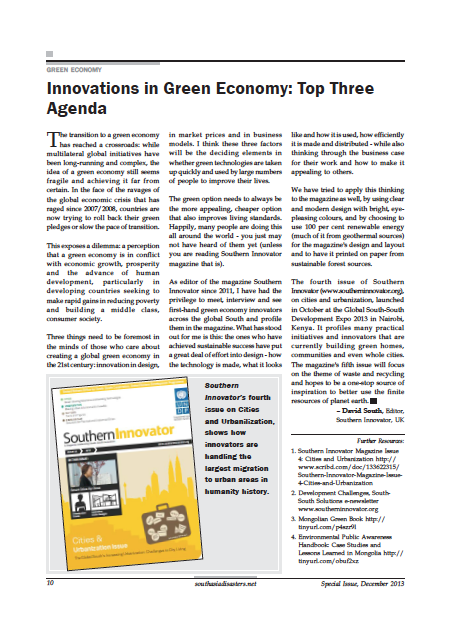Lima to Delhi: What can be Learned on Urban Resilience? | 26 November 2015
 Thursday, November 26, 2015 at 3:05AM
Thursday, November 26, 2015 at 3:05AM
Published: March 2015
Publisher: Southasiadisasters.net
Issue No. 128, March 2015
Theme: Challenges of Urban Resilience in India
Fast-growing cities and urban areas in the global South can be vulnerable because they lack the web of structures and institutions that enable more long-established cities to mitigate risks and, when a disaster does strike, to bounce back quickly.
But thanks to many new technologies, and some smart new thinking, it is possible to bring resilience to even the poorest and most deprived urban communities.
The essence of resilience is to build into plans and daily activities a
community's ability to weather any disaster, small or large. All cities, rich or poor, can experience a disaster of some sort, be it weather, civil unrest, war, earthquakes, shortages, or economic, financial and health crises. New technologies make it possible for all cities, no matter how poor and overcrowded, to build in urban resilience. The ubiquity of mobile phones introduces a powerful city and urban planning tool. Mapping chaotic and unplanned areas is already underway in many cities of the global South (in Brazil and Kenya for example (http://tinyurl.com/qgba8kb).
Impressively, innovators in the South are using affordable microelectronics in the form of mobile phones and laptops to gather data and map it. This computing capability was once the sole domain of big information technology companies such as IBM. Now, a single laptop computer combined with a smartphone equipped with the right software can manage a large urban area, a task that once required rooms full of computers. The data can then be used to manage growth today and re-build after a disaster. Any excuse not to be resilient has been wiped out with this technological leap.
But how to deal with the common reality of feeling overwhelmed by the many obstacles to rational planning and building for urban growth in the South? Innovators have stepped in to take matters into their own hands with simple construction technologies as the solution. One example is the Moladi system of recycled plastic moulds (moladi.net). Anybody can master this simple building technique, as the mortar-filled moulds are designed to fit easily together to construct an earthquake-resistant, beautiful home.
This approach has the advantage of bypassing the failings of authorities to enforce building codes and standards in poor, urban communities, creating safer places to live and preventing the growth of unregulated shanty towns at risk to fire and earthquakes.
Others have found social ways to organize people, even in the most desperate of conditions, providing services and laying down the groundwork for an upgrading of an urban area to improve living conditions and long-term opportunities. The
concept of 'cities for all' has inspired many to re-energize civic organizations and networking in poor areas to ensure they are not left out of economic growth. In Colombia, a famous example of this is the escalator in the city of Medellin, which connects a hillside slum to the centre of the city, opening up economic opportunities to all (http://tinyurl.com/nm47d3u).
Still more exciting, new technologies are in the works to simplify construction of major infrastructure and new buildings. A future city will be able to gather extensive data on an expanding urban area, make detailed development plans with architects and engineers, and then have robots and 3D fabricating machines quickly lay down infrastructure and erect buildings. Sounds far-fetched?
Well, in China one company recently used a 3D machine to make 10 houses
in a single day (http://www.yhbm.com/index.aspx).
An infographic from Southern Innovator's fourth issue (http://
tinyurl.com/m9vfwur) shows 10 ways any urban area - either planned or unplanned - can build in resilience. All are proven approaches from cities
in the global South.
Southern Innovator's upcoming sixth issue will explore the interplay
of science, technology and innovation in the global South and how people are making the most of 21st century advances to increase wealth and improve human
development. Hopefully, all of this innovation will lead to more resilient cities in the future!
– David South,
Editor, Southern Innovator, UNOSSC
 The first five issues of Southern Innovator designed to show and teach.
The first five issues of Southern Innovator designed to show and teach.

